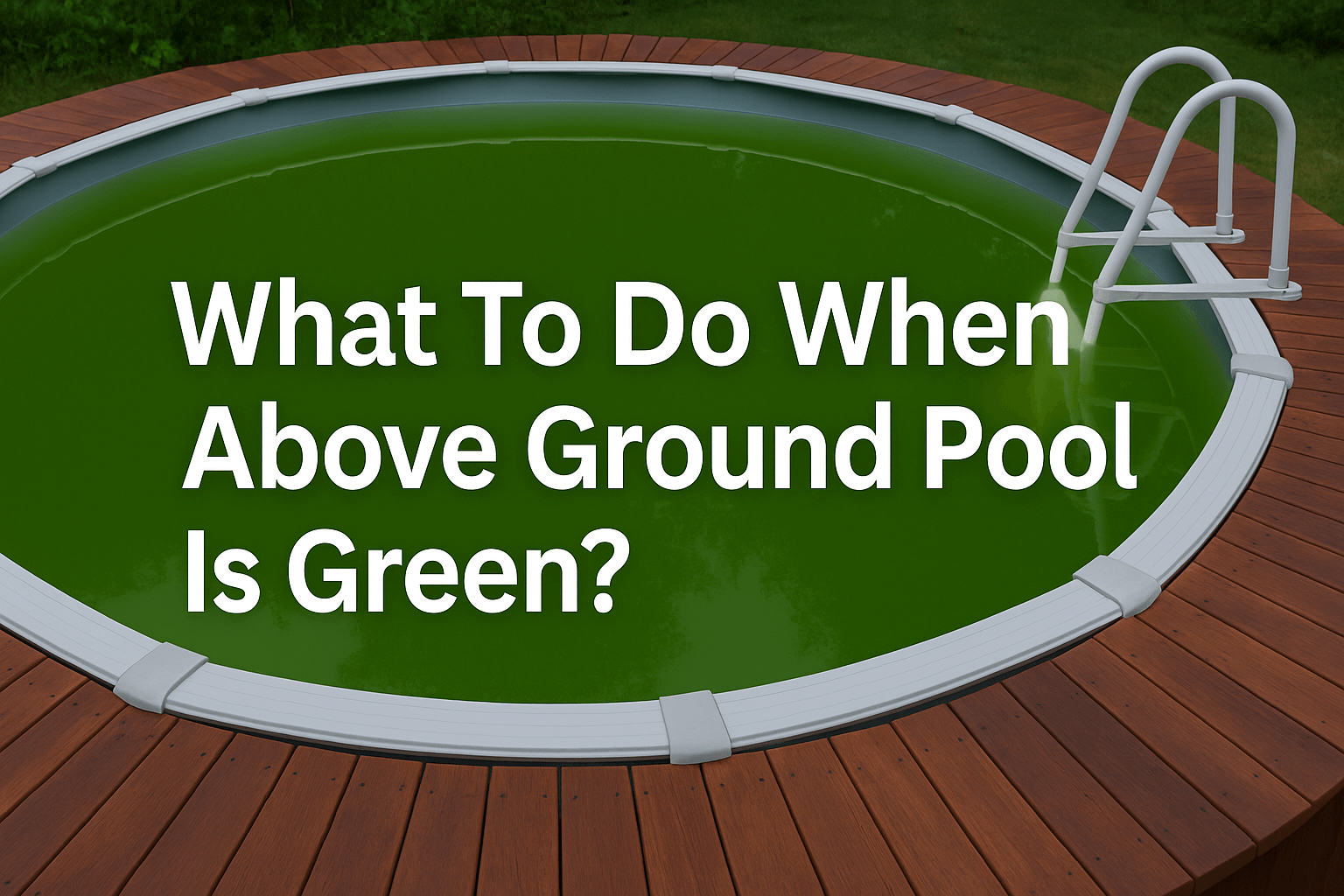
What To Do When Above Ground Pool Is Green?
Opened your garden pool only to find it’s gone full swamp?
Short answer: shock it, scrub it, filter it.
Keep reading to learn the simple steps (and sneaky tricks) to turn murky green into sparkling blue — before the frogs send you a housewarming card.
The 3 Main Causes of a Green Pool
Algae Growth from Low Chlorine
Why inadequate sanitiser is the primary culprit
Imagine leaving a loaf of bread in the kitchen for a week in summer. You know that green fuzz you’d find? That’s basically what’s happening in your pool.
Without enough chlorine, algae spores — which are always present in water — multiply fast. Warm, still conditions make it worse, and before you know it, you’ve got pea soup instead of a swimming pool.
The role of pool shocking
Shocking the pool is like hitting a giant reset button. A hefty dose of chlorine destroys algae before they get cosy.
Skip this step after heavy use or rain and you’ve practically rolled out the welcome mat for an algae takeover.

Poor Filtration and Circulation
How a dirty filter or weak pump leads to algae
Think of your pool filter like the heart of the system — if it’s clogged or weak, the whole thing suffers.
Poor circulation means certain spots in your pool become stagnant, creating little pockets where algae can grow undisturbed. Even perfect chlorine levels can’t save you if the water isn’t moving.
Steps to clean or replace your filter
Clean your cartridge or sand filter often, especially during peak swimming season. Backwash when the pressure gauge tells you to.
If your pump’s losing power, it might need a service — or even replacing — to keep water flowing strong.

Unbalanced Water Chemistry
How high pH and alkalinity encourage algae
High pH levels turn chlorine into a lazy lifeguard — it’s still there, but it’s not doing much. The same goes for alkalinity that’s out of range.
When the chemistry’s off, algae thrive. They’ll spread faster than gossip at a village fête.
The importance of proper chemical testing
A pool test kit isn’t just a nice extra — it’s essential.
Check your pH, alkalinity, and calcium hardness weekly, and adjust as needed. This keeps your chlorine working at full power, giving algae zero chance to settle in.

A Step-by-Step Guide to "Green to Clean"
The Algae-Killing Process
Step 1: Clean the pool of debris
Before you do anything else, grab a net and get rid of leaves, dirt, and other bits floating about.
Not only do they feed algae, but they can clog your filter while you’re trying to fix the problem.
Step 2: Shock the pool with a high dose of chlorine
Once your water’s been tested and balanced, it’s time for the big guns. Add a generous shock dose of chlorine to kill off every last bit of algae.
Follow the product instructions — more isn’t always better, but too little won’t do the job.
Step 3: Run the pump 24/7 until the water is clear
This is where patience comes in. Keep the pump running around the clock so the filter can catch the dead algae.
Clean or backwash the filter regularly during this stage — it’s going to be working hard.
Step 4: Rebalance all chemicals
When the pool finally looks inviting again, don’t just jump in. Retest and rebalance your pH, alkalinity, and calcium hardness.
This locks in your hard work and stops algae from making a comeback.
Preventing Future Green Pool Water
You’ve done the hard part — now it’s about keeping that water crystal clear.
Test your pool’s pH and alkalinity at least once a week. Run your filtration system for a minimum of 8 hours a day, even when you’re not swimming.
Adding a preventative algaecide to your weekly maintenance is a smart move too. It’s like insurance for your pool water — boring but worth it.
Stay on top of these simple habits, and you can enjoy your above ground pool with deck all summer without a single hint of green.
Have you checked out our other posts?
Why My Above Ground Pool Is Green?
Will Above Ground Pool Settle?
Above Ground Pool Is Not Level?



Leave a comment